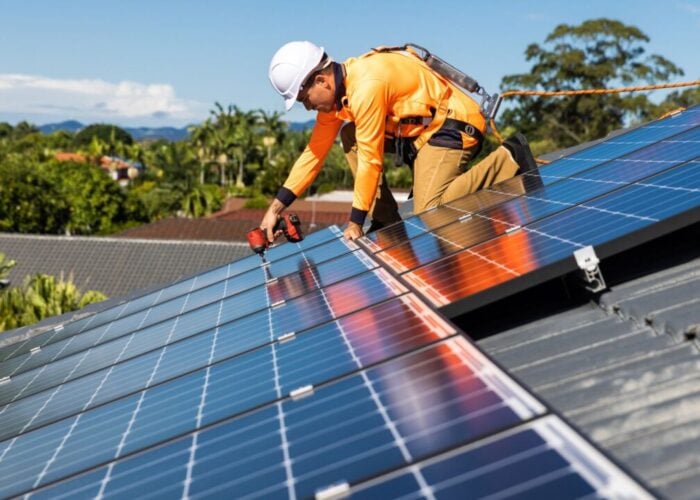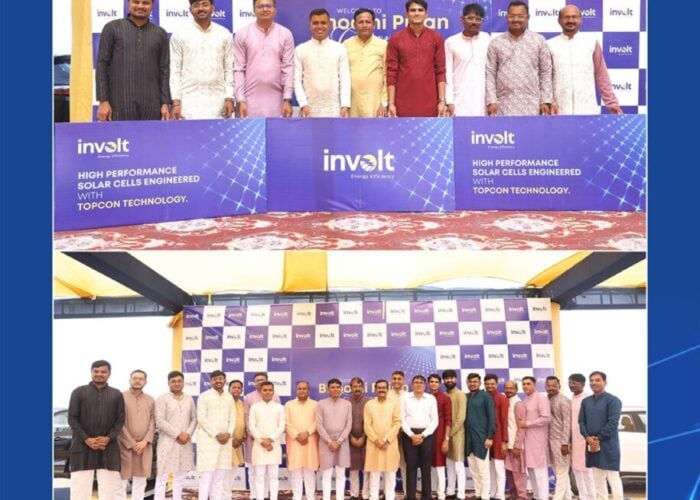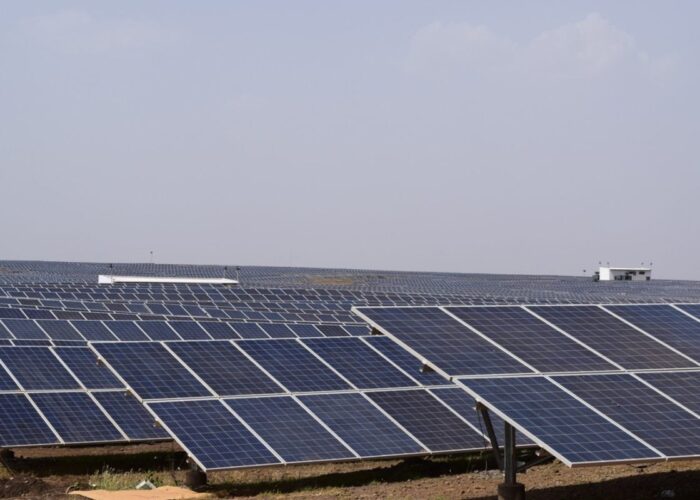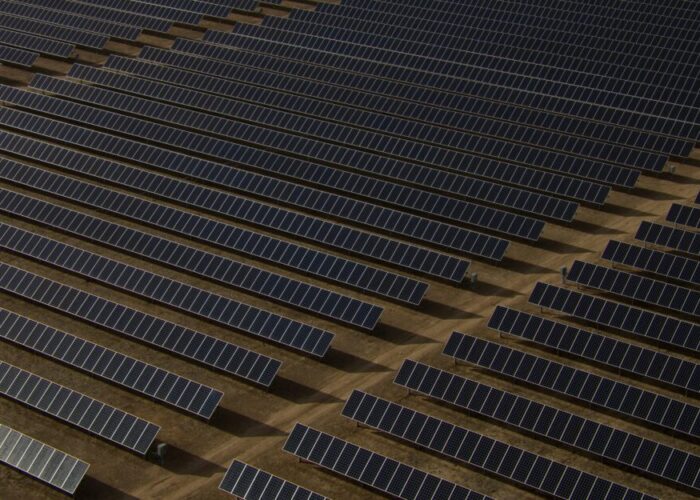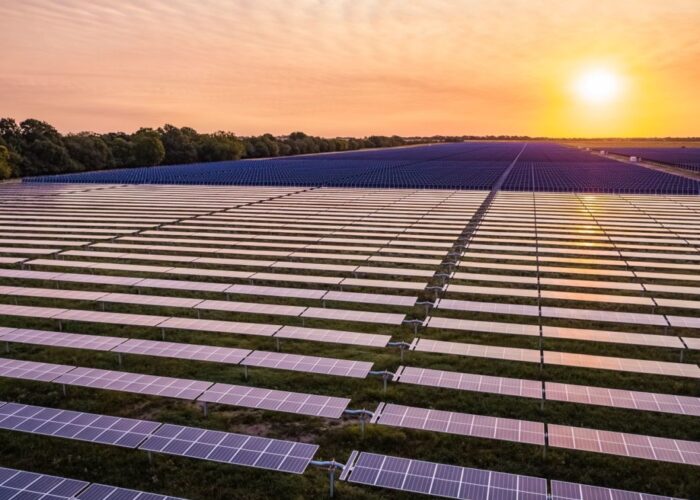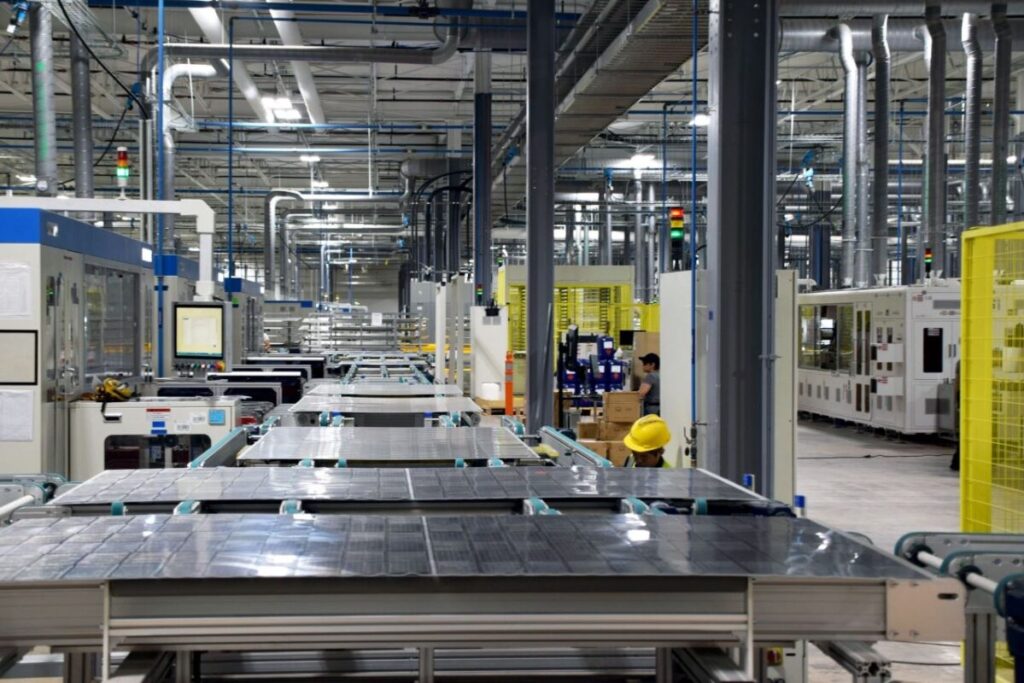
As the pace of development in US PV manufacturing quickens, attention is fast shifting from module capacity additions to investments in cell capacity. These investments are supported by a remarkable price premium of ~US$0.18/W to US$0.20/W for US modules containing domestic cells for delivery in 2026, relative to US assembled modules containing imported cells.
A primary driver of this very significant price premium is the additional 10 percentage points investment tax credit through the Section 48 Domestic Content Bonus (DCB) under the Inflation Reduction Act (IRA). The economics of a US cell factory additionally benefit from:
Unlock unlimited access for 12 whole months of distinctive global analysis
Photovoltaics International is now included.
- Regular insight and analysis of the industry’s biggest developments
- In-depth interviews with the industry’s leading figures
- Unlimited digital access to the PV Tech Power journal catalogue
- Unlimited digital access to the Photovoltaics International journal catalogue
- Access to more than 1,000 technical papers
- Discounts on Solar Media’s portfolio of events, in-person and virtual
Or continue reading this article for free
- The US$0.04/W 45X manufacturing incentive under the IRA – for a 2GW cell factory, this amounts to ~US$6.7 million per month
- High cell prices: US manufactured cells are currently selling in the range of US$0.35/W to US$0.37/W for 2026 delivery – a premium of ~US$0.14/W over a cell imported from Southeast Asia (in line with the module price premium), and the possibility of significant tariffs on imports of all goods to the US has the potential to drive domestic cell prices higher still
Developers considering an investment in a US cell factory face multiple choices. These include selecting a potential technology, manufacturing and/or commercial partner, a commercially viable factory location and establishing a supply of critical material and component inputs. One of the most consequential of these choices is selecting cell technology at a time when the industry is undergoing a rapid transition.
The global PV industry is fast moving away from passivated emitter rear cell (PERC) architecture to TOPCon (tunnel oxide passivated contact) and, to a lesser degree, heterojunction (HJT) architectures. The speed and scale of this transition are illustrated by TOPCon’s expected rise in global production share from 75% of 2025 cell production to 85% in 2026 and 90% in 2027, based on Clean Energy Associates’ (CEA’s) rigorous analysis of investment and production trends.
This transition is driven by the new technologies’ superior technical performance relative to PERC. For TOPCon, this includes higher conversion efficiency of ~1.5 percentage points, higher backside power (bifaciality) of roughly 20 percentage points, and lower power loss as operating temperatures rise (temperature coefficient). These performance advantages deliver economic value to project developers in two ways:
- Higher efficiency enables lower balance of system costs
- Higher bifaciality and lower temperature coefficient mean energy production for a given power rating will be higher
Further, there is significant potential for improvement in TOPCon cell conversion efficiency over time, given its relative lack of maturity in commercial production. The potential for such performance improvement is illustrated by the experience with PERC in mass production; average efficiency has increased by 3.2 percentage points from when PERC entered mass production in 2016 to today, based on CEA analysis. There is clear potential for TOPCon (and HJT) to experience a similar improvement in product performance over an identical period, resulting in the performance gap between TOPCon and PERC widening over time.
Speed to market
In this context, it would appear that the obvious technology choice for US cell manufacturers would be TOPCon (or potentially HJT). Nevertheless, carefully evaluating the full slate of risks and benefits associated with these technology options is warranted. A key criterion to consider is speed to market. Being among the first operational large-scale domestic cell suppliers will have three significant benefits:
- Establishing relationships with key customers before your competitors, potentially locking in volume
- Maximising production volume during the period of high prices; the price premia for U.S. cells and modules containing U.S. cells are expected to decline significantly starting in 2027 as more US cell capacity comes online
- Maximising production with the 45X incentives in place; under current law, these incentives are set to start declining in 2030 and are to be phased out altogether after 2032
In this regard, PERC may offer meaningful speed-to-market benefits, measured in months or even quarters. This is particularly true for manufacturers with limited or no experience operating TOPCon cell factories. Specifically, PERC-based plants are likely to require less time to commission, start up and then ramp production. PERC plants are likewise expected to require less time to achieve target product performance metrics such as cell efficiency. Finally, PERC lines are positioned to attain on-spec production line yields in a meaningfully shorter time than a factory based on TOPCon technology, which supports achieving targeted cost more quickly. Each specific instance will be different, but CEA believes that a new entrant selecting PERC over TOPCon could see their product in the market three to six months sooner, if not more.
IP risk is another important topic to consider. At present, six different companies claiming to hold IP relevant to TOPCon are engaged in lawsuits against a total of 12 defendants in the US court system. The eventual outcome of this litigation is, of course, unknown. Still, this is a real source of uncertainty, particularly in a market environment where any potential restriction in production volume linked to IP disputes translates into a lost opportunity to capture 45X incentives.
Finally, it is worth noting that TOPCon’s more limited in-the-field operational track record compared with PERC brings with it the potential for novel degradation modes. For example, some TOPCon-based modules have experienced UV-induced degradation. Although it is believed that appropriate process modifications can solve this issue, PERC is overall considered to be a more mature technology that can achieve reliability benchmarks more easily than TOPCon.
Notwithstanding these factors favouring PERC for the US market, the potential widening performance gap between TOPCon and PERC is a critical consideration. This risk is mitigated in the US market by the constraints on supply caused by US trade policy. Much of the global cell manufacturing capacity that could serve the US market is in less mature PV manufacturing regions where TOPCon and HJT technologies are not well established. It is also worth noting that the performance metrics of PERC-based modules compare favourably to those of First Solar’s thin-film modules, which have a significant presence in the US market. As a final consideration, there is the potential to design a PERC-based cell factory (including factory space and permitting considerations) such that it can be upgraded to TOPCon at a relatively modest cost, providing a pathway to extending the commercial life of the cell plant to continue serving the US market.
In summary, aspiring developers of US cell manufacturing facilities face a unique set of incentives that potentially impact their technology selection. Careful consideration of the pros and cons of established PERC vs. emerging TOPCon (and HJT) technologies is essential to making the optimal choice in the context of each aspiring manufacturer’s particular set of circumstances. This is reflected in CEA’s assessment that ~35-40% of crystalline silicon cell capacity operational in the US at the end of 2026 will be PERC-based.
Martin Meyers, is director of market intelligence at Clean Energy Associates


